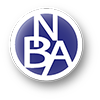This is an interesting dilemma.
Ideally, the student should understand the subtraction concept being presented here by using her hands, as pictured. To present this as a tactile graphic or as tally marks is adding another layer of conceptual learning that is not the point of this exercise.
If you go ahead with the tally mark idea, I would substitute a different symbol for the crossed out finger (thumb, in this case) -- I think I would use a full cell (123456) which, in Nemeth, is the general omission symbol. I wouldn't introduce cancellation indicators at this point.
Recommendations regarding transcriber's notes can be found in Guideline 3 of the BANA publication "BANA Guidelines for the Transcription of Early Educational Materials from Print to Braille" which is available on the BANA website. 3.1.5 states that "Kindergarten transcriber's notes are limited to as few words as possible ..." This is difficult to do. You could make a key where (456) means one finger and (123456) means no finger. Something very simple like that. 2.2.3 and 2.2.4 gives good information regarding "teacher's reference materials" that you will be providing in print for the teacher. The teacher can then choose whether or not to use the tally mark system or a more hands-on method.
You may find other information in the Early Educational Materials publication that will help you make decisions in this transcription.
Thanks for this example.
Lindy
